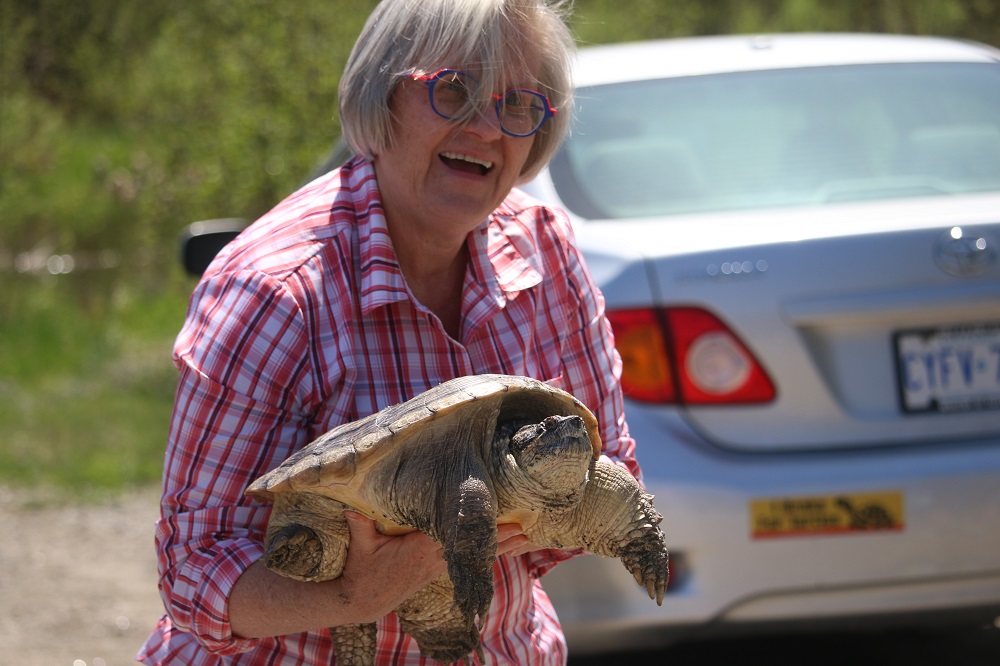With the warm weather now here to stay, Turtle Guardians is ramping up its activities ahead of what lead, Leora Berman, expects will be another busy summer.
The Haliburton-based non-profit acts as the first line of defence for turtle species across the Highlands. Launched in 2017, the organization – a subsidiary of The Land Between conservation group – conducts research and analysis on the population dynamics and trends of turtles; identifies threats to at-risk species, with a focus on maintaining important wetland areas; maps, designs, and pilots road mitigation measures to avoid vehicle collisions; and excavates, incubates and head-starts hatchlings to help bolster local numbers.
The Haliburton-based non-profit acts as the first line of defence for turtle species across the Highlands. Launched in 2017, the organization – a subsidiary of The Land Between conservation group – conducts research and analysis on the population dynamics and trends of turtles; identifies threats to at-risk species, with a focus on maintaining important wetland areas; maps, designs, and pilots road mitigation measures to avoid vehicle collisions; and excavates, incubates and head-starts hatchlings to help bolster local numbers.
That offering has expanded this year to include older residents. Turtle Guardians held its first adult workshop May 13, with 15 people attending.
“We’ve taught this kind of thing to kids a lot, but we found more and more that adults were interested in learning the basics of caring for turtles,” Berman said.
The program was led by Berman and Grace Wiley, a species-at-risk mitigation technician with The Land Between.
“We cover everything that kids at turtle camp would learn – why turtles are important for our wellbeing and future; what they do for our lakes and water supply; what they do for fish and wildlife. Turtles are one of the most environmentally significant species [in the world] and contribute to healthy ecosystems,” Berman said.
“We teach people how to identify the different species, how to handle and help them. We cover turtle biology and behaviour, how to recognize when they’re uncomfortable. That’s important, so people know what to do if they come across a turtle in need while out in the community.” she added.
Julie and Martin Harris attended the event after reading about Turtle Guardians’ efforts online. The couple relocated to the County in 2021 and have been looking for ways to become more involved in the community.
“This ticked all the boxes. I’m interested in learning more about turtles and how to help protect them, and we’ve had a chance to get to know some more people and learn in a very easy environment,” Julie said.
Asked what her biggest takeaway was, Julie added, “just learning about their habits. And what not to do. Because a turtle imprints in a specific area, you can’t just pick them up and plant them somewhere else. I hadn’t realized that at all. It turns out you’re committing them to almost certain death if you do that.”
All attendees received their level one Turtle Guardian certification. Berman said there are five training levels, with the highest qualifying volunteers to participate in advanced field work.
She noted there are plans to run another workshop in July. Heading into summer, Turtle Guardians has around 70 active volunteers.
“The more people who know how to help turtles in the world, the better,” Berman said.
“The more people who know how to help turtles in the world, the better,” Berman said.





